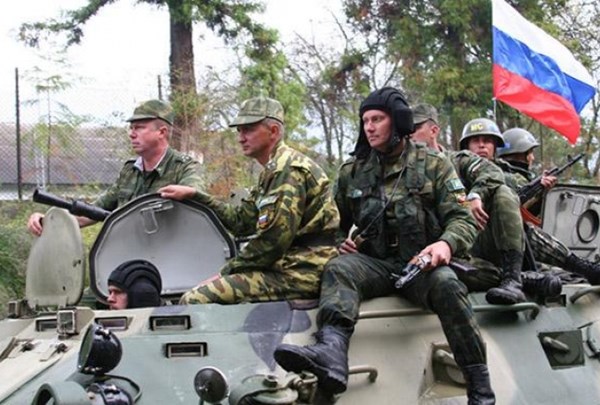Russian forces achieve strategic gains on Pokrovsk front amid Ukrainian resource challenges
The primary factor behind the Russian advancement in the Pokrovske direction is their superior resources. Additionally, previously prepared fortifications are aiding the Russians more than the critically understaffed Ukrainian defenders.
According to Ukrainska Pravda , by the end of June, Russian forces had concentrated up to eight assault brigades in the area, advancing either in small groups of 5-7 or larger ones of 10-30.
Sergiy Filimonov, commander of the 108th Separate Battalion "Da Vinci Wolves" of the 59th Brigade, revealed that up to 80 Russian troops can assault a position held by just four Ukrainian soldiers in a day. His unit, stationed south of Selydove, primarily suffers gunshot wounds from close-quarters combat.
A commander from the 31st Brigade recounted the Herculean efforts required to defend their positions along the railway in the village of Progress.
By March, ammunition for stopping infantry had run dry during battles near Avdiivka. A soldier from the 68th Brigade noted that if back then they were allocated 50 shells per mortar a day, by September it was significantly less.
"This is a drop in the ocean for defending such an area," he said, adding that Russian forces frequently use KABs (guided bombs), unlike the mortars used by the Ukrainian Forces.
A battalion from another brigade, withdrawn from the Pokrovske direction, received three shells for a 120mm mortar daily and had to rely on 82mm mortars, which were supplied with 40-45 shells.
For some classes of weapons, ammunition has been lacking for a month, and volunteers have partially mitigated the situation by supplying FPV drones.
Meanwhile, the Russians are bombarding Ukrainian positions with guided air bombs, against which the Ukrainian army has no effective counters.
A soldier from the 47th Brigade highlighted that the first problem in the Pokrovsk direction is personnel numbers, the second is their training, and the third is the level of unit command development.
A soldier with six months at the Pokrovsk front noted the acute shortage of personnel, especially infantry. Many brigades have always been understrength.
For instance, the 110th Mechanized Brigade was called to "extinguish the fire" in Ocheretyne just two months after being withdrawn from Avdiivka, where they had defended for almost two years, the last six months repelling Russian advances. Predictably, the brigade did not have enough time to recover or recruit new members.
By July 2024, the 110th brigade's infantry was less than 40% full. Currently, the brigade remains in this sector.
In March 2024, the 68th Brigade, albeit relatively complete, was redeployed from the Kupyansk-Lyman line to the Pokrovsk sector without rest. In the first village they encountered—Semyonivka, a few kilometers west of Avdiivka—the unit suffered significant losses.
"If in Semyonivka nearly 90% of our unit were experienced troops and 10% were rookies, now it's almost the reverse. The average age of new recruits might be closer to 55+," explained the soldier from the 68th.
Newly formed brigades like the 151st were better staffed but had no combat experience.
In the Pokrovsk direction, long-term defensive points and trench lines were set up, though many of these structures are not suitable for actual defense. Often placed in open fields, they are visible to the enemy and challenging to supply with personnel and equipment.
"When Bezuglaya posts photos of empty trenches and questions why they are unguarded, I understand why. It's sheer madness to sit in a hole in the middle of an open field. An FPV drone will eventually hit you," commented a soldier named Vitaliy.
Filimonov noted that even with pre-prepared positions, the "Da Vinci Wolves" must dig their own trenches.
The pre-built trenches and dugouts in the fields are difficult to supply logistically. Anti-tank ditches leading from enemy positions to Ukrainian positions are also hard to monitor.
"These fortifications help the enemy more than they help us," he emphasized, adding that he lacks the personnel to man the positions on the Pokrovsk front.
He believes that those responsible for these fortifications should face criminal charges.
The Pokrovsk direction is overseen by Operational Tactical Groups "Kherson" and OTU "Donetsk." Initially commanded by Lieutenant General Yuriy Sodol, now replaced by Brigadier General Andriy Hnatov, and Major General Eduard Moskalyov, succeeded by Colonel Oleksandr Lutsenko, who led the 79th Air Assault Brigade.
The Operational Tactical Groups "Kherson" and OTU "Donetsk" declined to comment on the reasons behind the rapid Russian advance.
The General Staff of the Armed Forces of Ukraine reports that a total of 157 combat engagements were recorded in the past day. Ukrainian defenders stopped 40 enemy attacks in the Pokrovsk sector. The most active combat took place near Vozdvyzhenka, Hrodivka, Novohorodivka, Marynivka, and Krasni Yar. The highest concentration of attacks was near Hrodovka and Novohorodivka.
Former General Staff spokesman Vladyslav Seleznev warned that the Russians are currently focusing on three directions but could launch an offensive in another.
